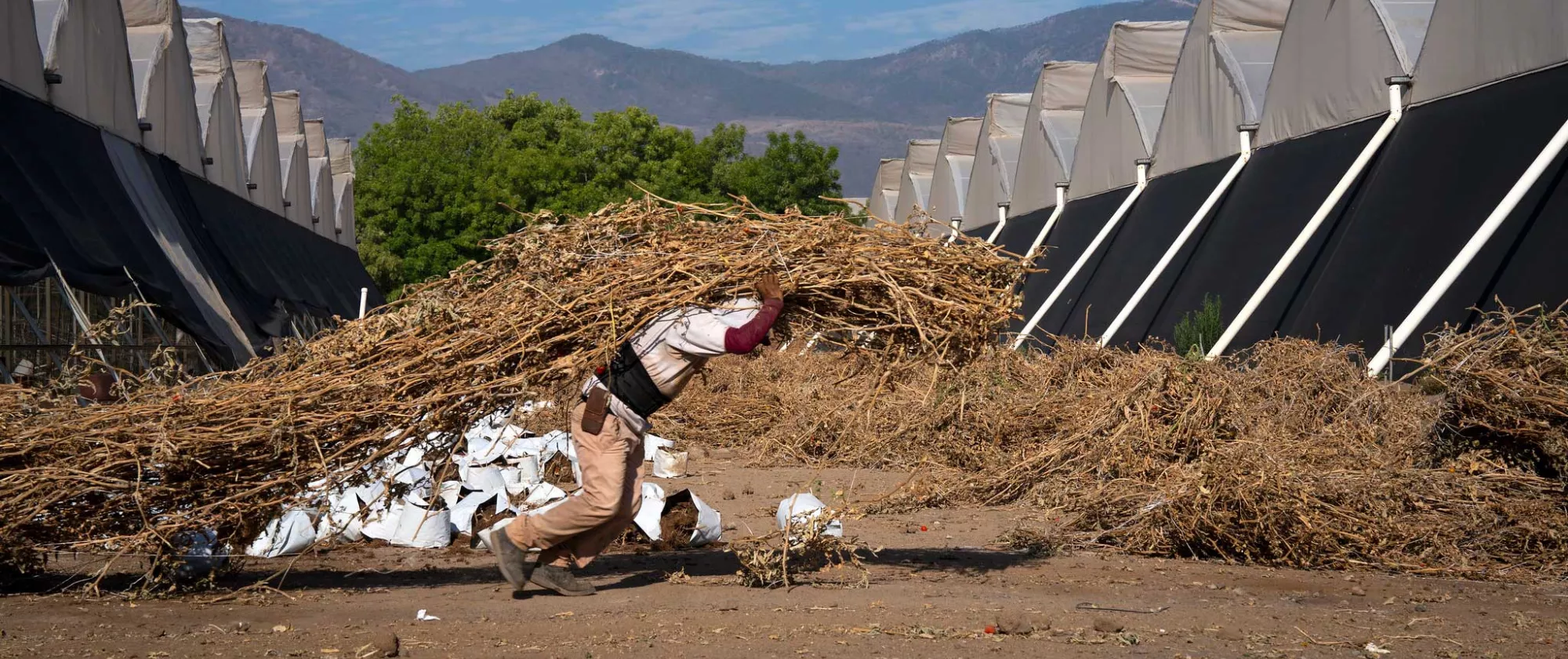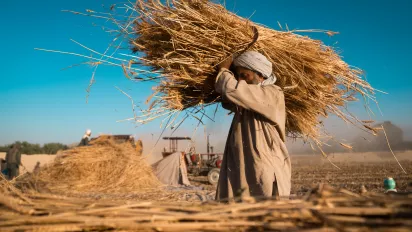
More workers than ever are losing the fight against heat stress
Heat is a silent killer that threatens the health and lives of a growing number of workers around the world, ILO report finds.
25 July 2024
GENEVA (ILO News) – A new report from the International Labour Organization (ILO), Heat at work: Implications for safety and health, warns that more workers are being exposed to heat stress worldwide. The new data reveals that regions previously unaccustomed to extreme heat will face increased risks, while workers in already hot climates will confront ever more dangerous conditions.
Heat stress is an invisible and silent killer that can quickly cause illness, heatstroke or even death. Over time it can also lead to serious heart, lung and kidney problems for workers, the study underlines.
Overall, the report indicates that workers in Africa, the Arab states and Asia and the Pacific are most often exposed to excessive heat. In these regions, 92.9 per cent, 83.6 per cent and 74.7 per cent of the workforce are affected, respectively. The figures are above the global average of 71 per cent, according to the most recent figures available (2020).
The fastest changing working conditions are seen in Europe and Central Asia, says the report. From 2000 to 2020 the region recorded the largest increase in excessive heat exposure, with the proportion of workers affected rising by 17.3 per cent, almost double the global average increase.
Meanwhile, the Americas and Europe and Central Asia are witnessing the largest rise in workplace injuries from heat stress since the year 2000, with increases of 33.3 per cent and 16.4 per cent respectively. This is possibly due to hotter temperatures in regions where workers are unaccustomed to heat, the report notes.
The report estimates that 4,200 workers globally lost their lives to heatwaves in 2020. In total, 231 million workers were exposed to heatwaves in 2020, marking a 66 per increase from 2000. Nonetheless, the report stresses that nine out of ten workers globally were exposed to excessive heat outside of a heatwave and eight in ten occupational injuries from extreme heat happened outside of heatwaves.
Excessive heat is creating unprecedented challenges for workers worldwide year-round, and not only during periods of intense heatwaves.
"As the world continues to grapple with rising temperatures, we must protect workers from heat stress year-round. Excessive heat is creating unprecedented challenges for workers worldwide year-round, and not only during periods of intense heatwaves, said ILO Director-General Gilbert F. Houngbo.
Improved safety and health measures to prevent injuries from excessive heat in the workplace could save up to US$361 billion globally – in lost income and medical treatment expenses – as the heat stress crisis accelerates, affecting global regions differently, emphasizes the study.
The ILO estimates show that low- and middle-income economies, in particular, are the most affected, as the costs of injuries from excessive heat in the workplace can reach around 1.5 per cent of national GDP.
“This is a human rights issues, a workers’ rights issue, and an economic issue, and middle-income economies are bearing the biggest brunt. We need year-round heat action plans and legislation to protect workers, and stronger global collaboration among experts to harmonize heat stress assessments and interventions at work,” added Houngbo.
The impact of heat on workers worldwide is fast becoming a global issue, and one that requires action.
“If there is one thing that unites our divided world, it’s that we’re all increasingly feeling the heat. Earth is becoming hotter and more dangerous for everyone, everywhere. We must rise to the challenge of rising temperatures – and step up protections for workers, grounded in human rights,” explained the UN Secretary General, Antonio Guterres.
The ILO report looks at legislative measures in 21 countries worldwide to find common features that can guide the creation of effective workplace heat safety plans. It also describes the key concepts of a safety and health management system to protect workers from heat-related illnesses and injuries.
The findings build on a previous report, published in April this year, which indicated that climate change was creating a “cocktail” of serious health hazards for an estimated 2.4 billion workers who are exposed to excessive heat. The April report indicated that excessive heat alone causes 22.85 million occupational injuries and the loss of 18,970 lives each year.
Report findings per region:
Africa
- Workplace exposures to excessive heat in Africa were above the global average, affecting 92.9 per cent of the workforce.
- The Africa region has the greatest proportion of occupational injuries attributable to excessive heat, accounting for 7.2 per cent of all occupational injuries.
Americas
- The Americas region has seen the most rapidly increasing proportion of heat-related occupational injuries since the year 2000, with an increase of 33.3 per cent.
- The Americas also have a significant proportion of occupational injuries due to excessive heat, at 6.7 per cent.
Arab States
- Workplace exposures to excessive heat in the Arab States were above the global average, affecting 83.6 per cent of the workforce.
Asia and the Pacific
- Workplace exposures to excessive heat in Asia and the Pacific were above the global average, affecting 74.7 per cent of the workforce.
Europe and Central Asia
- Europe and Central Asia had the greatest increase in excessive heat exposure, with a 17.3 per cent increase between 2000 and 2020. This is almost double the global average increase of 8.8 per cent.
- The region has seen a rapid increase in the proportion of heat-related occupational injuries since 2000, with a 16.4 per cent increase.
Resources for media
- Download multimedia assets: Video News Offer with interviews with an ILO OSH Expert and with a greenhouse agricultural worker from Mexico, B-roll and photos.
- Watch the UN Secretary-General's Call to Action on Extreme Heat
Related content
A global review of the science, policy and practice
Heat at work: Implications for safety and health

Newly-launched global campaign tackles the impact of heat stress on workers worldwide
Global Report
Ensuring safety and health at work in a changing climate

Topic portal
Safety and Health at Work